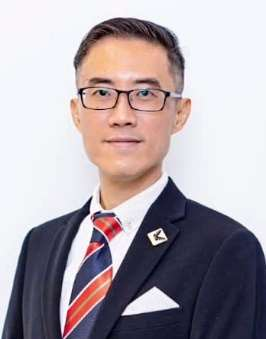
| Prof. Kok-Keong Chong, Universiti Tunku Abdul RahmanProf. Dr. Chong Kok-Keong received B.Sc. (Hons) 1st class degree from University of Malaya in 1998 and Ph.D. (Optical Engineering) degree from Universiti Teknologi Malaysia in 2002. He is also Fulbright visiting scholar in Princeton University, USA in 2015. Currently, he is Senior professor in Universiti Tunku Abdul Rahman. For research experience, he has been working in the field of solar energy engineering for more than 25 years and his research interest including emerging solar cell technologies, concentrating solar power, nanomaterials, and green technologies. To date, he has been elected as Fellow of Academy of Science Malaysia 2019, Fellow of ASEAN Academy of Engineering & Technology (AAET) 2018, Global Young Academy 2014, Young Affiliate of The World Academy of Sciences (TWAS) 2011, Young Scientist Network Malaysia 2012, and Honorary Treasury of Fulbright Alumni Association Malaysia. Title:Research & Commercial Development of Photovoltaic TechnologiesAbstract: In 2025, the global installed capacity for solar photovoltaic (PV) energy reached approximately 2.2 TW, representing a significant increase from 1.2 TW in 2022. Solar PV continues to lead renewable energy capacity growth, accounting for the largest share of new renewable energy additions globally. In 2025 alone, 887 GW of solar PV capacity was installed, with China being the largest contributor. Other key contributors include the United States (239 GW), India (100 GW), Germany (99 GW), and Australia 40.6 GW. Several photovoltaic (PV) technologies are currently available in the market, each with unique characteristics in terms of efficiency, cost, and application. The major types include Monocrystalline Silicon (Mono-Si), Polycrystalline Silicon (Poly-Si), Thin-Film Solar Cells, Bifacial Solar Panels, Perovskite Solar Cells, Tandem Solar Cells, Concentrated Photovoltaics (CPV). Different types of PV technologies have their advantages and drawbacks. We will cover each PV technology, starting from the underlying principles to overall performance, providing a comprehensive view of the latest advancements in solar energy and its future potential. For concentrator system, hybrid of photovoltaic-thermal (PVT) systems possesses tremendous potential as sustainable energy solutions in the places with high direct normal irradiance and high ambient temperature. Concentrator photovoltaic-thermal (CPV-T) and photovoltaic-thermal (PVT) technologies can increase the overall performance of system energy conversion by extracting the waste heat rejected by the photovoltaic modules. In this presentation, a few designs of CPV-T and PV-T have been explained and discussed. |
Prof. Pierluigi Siano, Università degli Studi di SalernoPierluigi Siano (Senior Member, IEEE) received the M.Sc. degree in electronic engineering and the Ph.D. degree in information and electrical engineering from the University of Salerno, Salerno, Italy, in 2001 and 2006, respectively. He is currently a Full Professor of electrical power systems and the Scientific Director of the Smart Grids and Smart Cities Laboratory, Department of Management and Innovation Systems, University of Salerno. In these fields, he has co-authored six international books, and more than 800 articles including more than 500 articles in international journals, which have received more than 25000 citations on Scopus, achieving an H-index of 76. His research interests include centered on demand response, energy management, the integration of distributed energy resources into smart grids, electricity markets, and the planning and management of power systems. Title:Multi-Objective Optimization for Assessing Tradeoffs Between Energy Sharing and Ancillary Services in Local Energy CommunitiesAbstract: Recent Italian regulation rewards Local Energy Communities (LECs) through two distinct channels: an incentive for virtual shared energy and market access for distributed batteries that provide up‑regulation. These incentives often conflict, as charging batteries to maximize the shared energy limits the capacity needed to provide ancillary services, and vice versa. Today, there is a lack of quantitative tools to effectively balance these objectives while respecting the electrical constraints of the low-voltage grid. To fill this gap, a multi-objective optimization is proposed that co‑maximizes the revenue from up‑regulation and the virtual shared energy reward, under the constraint that the daily energy bill does not exceed a predefined baseline. The implemented mathematical programming formulation utilizes multi-objective second-order cone programming (SOCP) with linear constraints to incorporate the network's physical constraints. Linearization and decomposition techniques are used to decompose the problem. By considering the physical constraints of the network, the impact of energy communities on the distribution network can also be evaluated when considering different conflicting objectives. The model allows the representation of real peer‑to‑peer trading, quantifying its effects on both revenue streams and on voltage profiles and power losses. Trade‑off analyses performed on an 84-bus radial distribution network, under both constant and variable prices, show that the framework adapts smoothly to market volatility, highlighting when it is advantageous to prioritize up‑regulation and when it becomes preferable to maximize the virtual shared energy incentive. |
|

